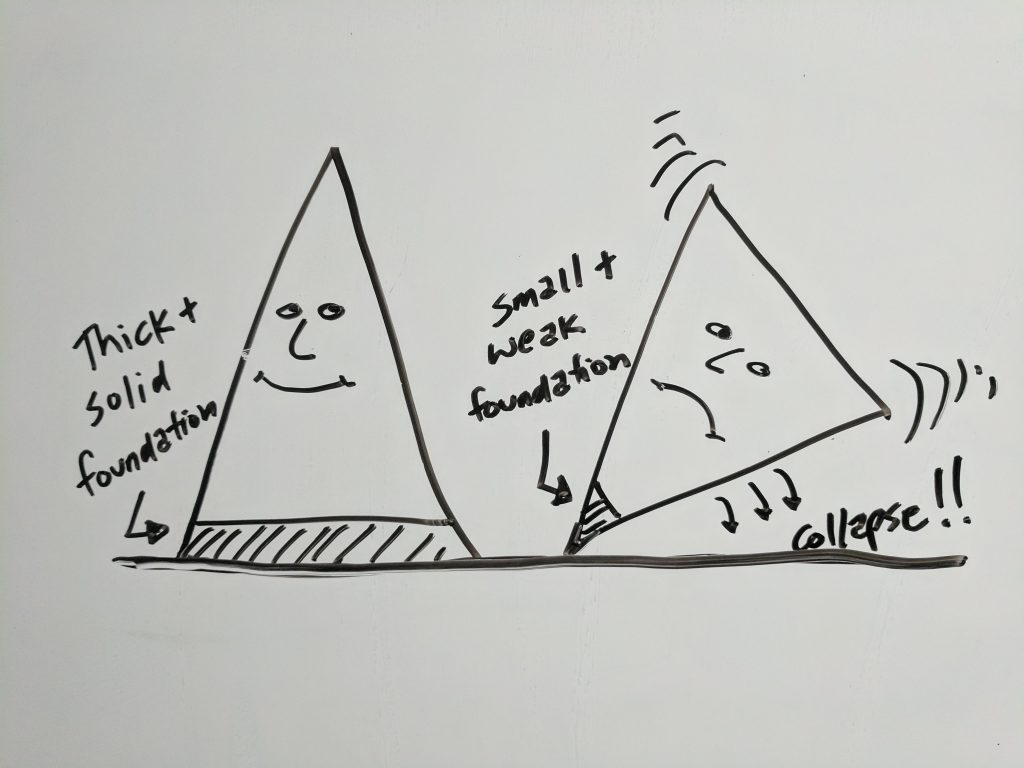
"Students in online conditions performed modestly better, on average, than those learning the same material through traditional face‐to‐face instruction."
The results are in, but not everyone is comfortable with learning and advancing their careers online, yet.
Keep reading and I'll address some of the most common concerns and perhaps some inspiration on how to improve how we gather knowledge.
For me personally, the inspiration came while I was searching for information about Responder Risk Management and LCES. Since I spoke about it in my in-person classes I wanted a deeper level of knowledge. My objective was to actually know and be prepared to use my newfound knowledge in class and in the real world … not just read about it.
Here’s what I found using the popular method of searching … Google:
- Lots of articles and definitions about what LCES is but not how to implement it. (L.C.E.S. = Lookouts, Communication, Escape Routes, Safety Zones)
- A few videos about LCES that were captured in a classroom when chalk and blackboards were still widely used.
- A couple of theory based courses on the same tired content I found on the previously mentioned websites.
Total time spent over several days of scrubbing the internet for advanced knowledge? About 8 hours.
What I have to show for it, like a pathway for continued improvement, continuing education credits (CEU’s) or a printable certificate? Nada, Zilch, Bupkis.
Sound familiar?
I’m embarrassed to admit that I have spent many hours across many days trying to expand my knowledge this way. My justifications consisted of things like:
- "I like to do it my way."
- "I have the time so why not?"
- "I don't want to pay to learn stuff."
And that's why my courses are designed specifically to address this problem of wasteful learning at an optimal value.
Imagine what you'll do with the time and money that you'll save!

Speaking of time and money savings, consider this case study:
CASE STUDY:
Search & Rescue Team
Copyright TEAM-Solutions.US All Rights Reserved
"Pat" manages an all-volunteer, Search & Rescue team. The team relies on members that are spread out across four counties. As a new member, "Sam" must meet minimum requirements for 1) training 2) attendance and 3) performance before he can respond on a real search.
That process required before Sam can be deemed 'operational' can take up to a year or more is one of several reasons that many new members like him quit. This poses a challenge for Pat since not having enough qualified members to deploy on real searches can result in serious consequences for the mission to find the lost or missing person.
Many new members like Sam also come from the private sector, where the expectation to be productive is common. They expect that the training they attend is:
- Well organized?
- Time efficient?
- Cost effective?
- Valuable for their personal development?
Besides the extensive delay in training, frequent drop outs are the result of these failed expectations:
- Too many hours spent driving to and from training, meetings and seminars
- Too many hours spent attending training, meetings and seminars
- Too much money spent going to training, conferences, seminars, buying books, etc.
It can be argued of course that the mission is better off without people like that, but the fact remains that quality SAR responders are hard to come by. Identifying why some leave helps fuel a solution.
Let's expand some detail for Sam's journey:
- Like most teams, Sam's team trains once per week and schedules a business meeting each month that often includes a training element. Sam's team also hosts or attends pricey seminars, external training classes, certification courses, buys books, pays for testing fees, etc.
- In Sam's case, he also is training a dog for search & rescue. The optional weekly training he attends to work with the team's experienced handlers and the related education is yet another commitment of time and expense.
- Not including equipment costs, Sam's annual costs associated with earning an operational status can be gigantic. Remember too, that other volunteer members are also contributing their time to help Sam receive the training he requires.
- And that doesn't include the yearly 'maintenance' costs to keep Sam trained and his knowledge refreshed.
So, what's all of that time worth? The non-profit trade group Independent Sector tracks and publishes this data every year:
"The value of a volunteer hour is $24.14 and the value of a volunteer mile is .14 cents."
2016
Using those figures, here's a conservative breakdown of Sam's volunteer time and expense to participate in his SAR team on a monthly basis:
Activity per MONTH | MINIMUM Time Spent Per MONTH | MONTHLY Costs @ $24.14/hour |
|---|---|---|
Time driving to and from training | 8 hours | $193.12 |
Time attending training & meetings | 20 hours | $482.80 |
Time attending misc training, seminars, etc. | 8 hours | $193.12 |
Fees, mileage costs, etc. | $150 | $150.00 |
Optional K9 Training | 20 hours | $482.80 |
Team member support | 20 hours | $482.80 |
MINIMUM Costs Before Equipment | 76 hours MINIMUM | $1834.64 MINIMUM |
In just Sam's first year - before he even goes on his first search - he spends nearly 1000 hours of time worth over $22,000. And has a 50/50 chance he'll quit before he even gets that far.
It should be noted that these are very conservative estimates. In my first year in SAR, I spent nearly TWICE as much time training than the above example.
For instance, here are my actual training hours for just my first ten years in search & rescue.
First 10 Years of SAR | Training HOURS Spent | MILES Driven for Training |
|---|---|---|
Year 1 | 1590 | 14400 |
Year 2 | 1156 | 9600 |
Year 3 | 907 | 6000 |
Year 4 | 1073 | 5000 |
Year 5 | 555 | 2200 |
Year 6 | 750 | 5374 |
Year 7 | 1048 | 7956 |
Year 8 | 757 | 7151 |
Year 9 | 430 | 4800 |
Year 10 | 459 | 1200 |
AVERAGE = | 872 hours PER YEAR | 6370 miles PER YEAR |
Copyright TEAM-Solutions.US All Rights Reserved
Sam and other new members like him may spend more or less time on their SAR training compared to the data above. However, anyway you slice it, the costs to train a new member are enormous and vastly under recognized.
If these teams were businesses, they'd be broke and still short of employees.
So it's easy to see why the burden of time and money breaks the will of many eager SAR prospects, doesn't it?
Therefore, if there's a way to trim 10%, 15% or even 20% percent off of that huge time and expense burden, it should be worth considering.
Solution:
Copyright TEAM-Solutions.US All Rights Reserved
DID YOU KNOW?
Training industry experts believe that nearly 85% of all on-boarding, foundation, and refresher training takes place online. (via E-Learn-Info Industry Report).
Online learners also report their top three results:
Better productivity
Improved development
Competitive edge
Frequently Asked Questions (FAQ)

Does Online Learning by TEAM Solutions replace hands-on training?
Why should I enroll in online training from TEAM Solutions?
How does 'Fundamental' Training by TEAM Solutions differ from 'Regular' Training? And why should I care?
Okay, please explain how we learn without an instructor present?
Does TEAM Solutions also offer in-person (synchronous) education?
I'm not ready to enroll yet ... how can I stay informed?
Okay, What's The Bottom Line?
If you and your team want the benefits from an improved education, a transformed knowledge while making a more intelligent investment of your time and money, then scroll down to learn how to enroll you and your team.
Right, Let's Do This! How Does It Work?
HOW IT WORKS
- Select the options you want for you or your group.
- Click one of the "Enroll" buttons.
- Register using the full name you want on your certificate/s and your best email address.
- Return to this page or access 24/7 via your MY Account portal.
- Consume each Lesson and Topic as many times as you want.
- Return to your MY Account page anytime to download or print your certificate.



